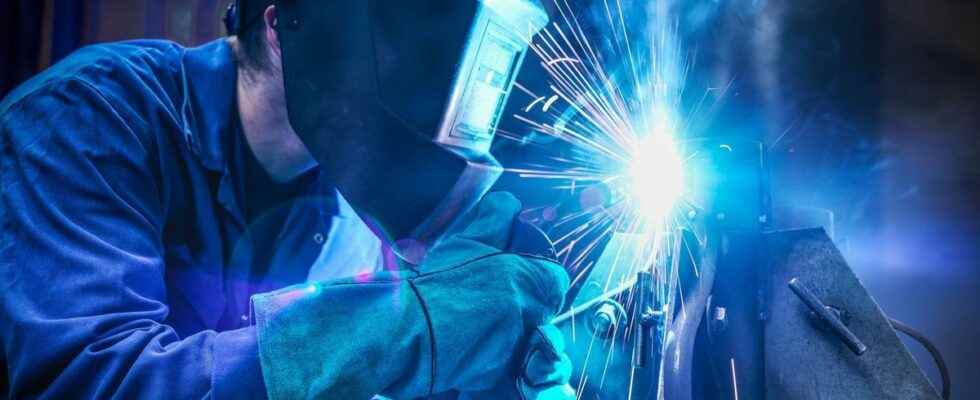Posted ,
Reading 2 mins.
Welding fumes are considered to be capable of causing bronchopulmonary and larynx cancers. As such, ANSES recommends including work involving exposure to welding fumes and metal fumes in the order setting the list of carcinogenic substances, mixtures and processes, within the meaning of the Labor Code.
It is a substance that affects more than 528,000 people, or 2.1% of French employees. Welding fumes naturally affect welders, but also construction workers installing and repairing machinery and equipment, vehicle repair and metallurgy, which include workers indirectly exposed to these fumes. .
Fumes classified as “carcinogenic to humans”
The composition of the welding fumes emitted varies according to various parameters, in particular the parts to be welded, the filler products or the type of process implemented. Other manipulations in parallel also cause fumes.
In 2018, the International Agency for Research on Cancer (IARC) classified these welding fumes as “carcinogenic to humans” based on sufficient evidence in humans for lung cancers and limited evidence for cancer. kidney. Other studies now allow us to conclude that there is sufficient evidence for cancer of the larynx and limited evidence for cancers of the oral cavity and naso-sinus.
Add these fumes to the list of carcinogens
Following these studies, the National Agency for Food, Environmental and Occupational Health Safety issued an opinion recommending that all work involving exposure to welding fumes or metal fumes from related processes be included in the list of carcinogenic substances, mixtures or processes within the meaning of the labor code.
“With this recommendation, in addition to workers exposed to welding fumes, we also propose to include workers exposed to metal fumes from related processes whose composition of carcinogens is found to be similar to that of welding fumes. This recommendation also makes it possible to include professionals whose main activity is not welding, as well as workers passively exposed, due to their presence near people carrying out welding operations. explains Dominique Brunet, Head of the Unit for the Assessment of Reference Values and the Risks of Chemical Substances at ANSES.
Consult an oncologist online
Professionals must be made aware of and protected from the risk
The awareness and protection of professionals exposed directly or indirectly to carcinogenic fumes are essential. “To achieve this, employers and employees must be trained and made aware of the use of the most appropriate and least emissive processes according to the welding operations to be carried out. Capturing fumes at the source and monitoring exposures are also actions to be implemented” specifies Dominique Brunet.
Additional data on the issue must be collected recommends ANSES, which recalls that beyond the fumes emitted, “Welding work also emits UV radiation classified as “carcinogenic to humans” by the IARC, which must be taken into account in the protection of exposed workers”.
